|
The name Wayzata came from the Sioux word meaning either The Northern
God or the Northern Shore. The Mdewakanton Dakotah, a major division of the
Sioux nation, treasured the "Big Water" (Lake Minnetonka today) as an endowed
hunting and fishing ground and protected this spiritual land from the rival
Chippewa tribe, who were known as Ojibiway. While these natives were living
off the land, the land was claimed in 1803 by France, who sold it to the
United States as part of the Louisiana Purchase. The nearest Euro-American
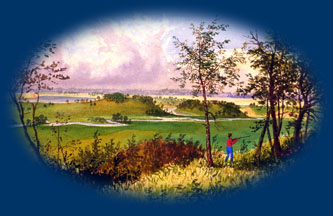 settlement then was Fort Snelling, and it wasn't until the Traverse Des
Sioux Treaty was signed in 1851 that the lands west of the Mississippi were
opened for land claims to be filed. Oscar E. Garrison, who knew where the
most desirable land was, built a cabin in 1852 at what is now Lake Street
and Broadway Avenue. In 1854 he drew a survey of the area and filed his
claim for most of what is now Wayzata proper. settlement then was Fort Snelling, and it wasn't until the Traverse Des
Sioux Treaty was signed in 1851 that the lands west of the Mississippi were
opened for land claims to be filed. Oscar E. Garrison, who knew where the
most desirable land was, built a cabin in 1852 at what is now Lake Street
and Broadway Avenue. In 1854 he drew a survey of the area and filed his
claim for most of what is now Wayzata proper.
In 1855, Wayzata had an influx of settlers who built a sawmill, a hotel
and a blacksmith shop. Most early settlers made their living off the land,
first by clear cutting the trees to grow corn and wheat. In 1857, this
flourishing economy was nearly terminated by a grasshopper plague. But
then ginseng was discovered in the remaining hard wood forest which had
been left standing, these trees being too great a distance from the lake to
float down stream to the sawmill. Ginseng's root was in great demand as a
aphrodisiac in the Orient, and after the eastern forests had been depleted,
Wayzata became a collection center for the roots discovered around the
lake. Ginseng saved the town.
With commercial traffic by steamboats becoming common on Lake
Minnetonka, Wayzata's position as closest to St. Paul assured growth for our town.
After the Civil War, vacationers from the steamy south began enjoying cool
breezy summers at the lake and the era of the resort arrived. In 1867 the
St. Paul and Pacific Railroad (today's Burlington Northern-Sante Fe)
extended its tracks to Wayzata, making Wayzata the transportation hub of
the area. James J. Hill, who would later have a major role in Wayzata's
history, was at the time a St. Paul freight agent for the railroad. With
numerous trains scheduled for activities in the area, hotels quickly popped
up around the lake, one being built where
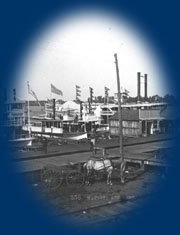 Garrison's cabin had been, called
the Maurer House-West Hotel. Boating, fishing, and picnicking would bring twenty thousand vacationers west, who would
stay at seventeen hotels that were scattered around the 99 miles of the
lakeshore then. Transporting the vacationers from the railroad landing in Wayzata to
the hotels were large paddlewheel boats, some able to accommodate as many
as 3,300 passengers! This era, the beginning of "The Gilded Age" reached its
peak in 1882 when Hill, now owning the railroad he had renamed The Great
Northern, built the 800 room Lafayette Hotel in Minnetonka Beach, a few
miles further down the tracks. As the fad ended other places became
fashionable. Vacationers soon were traveling to the newly opened
Yellowstone Park. And then in 1893 the financial depression hit America. Garrison's cabin had been, called
the Maurer House-West Hotel. Boating, fishing, and picnicking would bring twenty thousand vacationers west, who would
stay at seventeen hotels that were scattered around the 99 miles of the
lakeshore then. Transporting the vacationers from the railroad landing in Wayzata to
the hotels were large paddlewheel boats, some able to accommodate as many
as 3,300 passengers! This era, the beginning of "The Gilded Age" reached its
peak in 1882 when Hill, now owning the railroad he had renamed The Great
Northern, built the 800 room Lafayette Hotel in Minnetonka Beach, a few
miles further down the tracks. As the fad ended other places became
fashionable. Vacationers soon were traveling to the newly opened
Yellowstone Park. And then in 1893 the financial depression hit America.
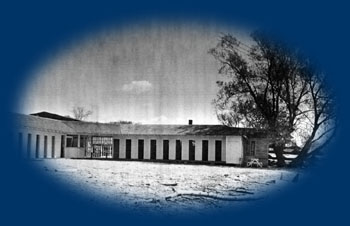
A new era began when the tourists moved on: summer cottages began
appearing along the shores, even on the grounds of the grand hotels, and in
Wayzata, up the hill behind Lake Street. Many of those hotels (including
the Arlington in Wayzata) were closed, and then burned down. The cottage
builders needed building materials, and then provisions when they moved
in. Wayzata broke away from Minnetonka Township and became a separate
governmental unit in 1881, mainly as a reaction to the roaring tourist-resorter
lifestyle. Feeling their new power, the first act of the village council
was to ban the saloons, and the second would have a more profound impact:
they started a fight with James J. Hill to get the railroad tracks moved
from downtown. An 1883 town law required the tracks be relocated 300 feet
from the shoreline. Hill ignored the law, then in 1889 the council filed a
lawsuit to force Hill to comply. Hill responded that he had state law on
his side, and if they continued with their suit not only would he win, but
he would make the town walk a mile for twenty years to catch a train.
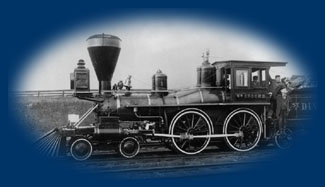
In
1891 the Minnesota Supreme Court denied the legality of the law, and Hill,
as promised, moved the station to flat land beneath today's Bushaway Road
railroad bridge. Wayzata was literally taken off the map, and for the next
fifteen years the town barely grew. In 1905 a wiser Village Council voted
a Reconciliation Ordinance, and Hill responded that he would have the
finest railroad station on his entire line built in Wayzata. He attended
the opening of the beautiful station, (a must see for all visitors to
Wayzata) passed out miniature hats of the one he wore, and even gave his
own desk for the Wayzata Station master to use.
As the cottage era continued, downtown Wayzata became mostly residential,
with small commercial centers at each end of Lake Street. The
following era was again recreational, based on motorboats. By the
1920, motorboating was the rage, and once again Wayzata was at the center,
with two nationally famous boat makers building speedboats on our
shoreline. Weekends brought thousands of spectators to the lake to
watch the boats race, and many of the visitors realized they could be happy
living in Wayzata.
|
Today's US Highway 12 had just reached Wayzata as a hard surfaced road,
and realtor Sam Batson was praising the benefits of buying a summer cottage
and modifying it for year-around living. The population nearly doubled in that
decade, and Wayzatans were fortunate when one of their own, Rufus Rand,
stepped forward to lead the town as it met the challenges of modernizing
the infrastructure of a summer village. Under Mayor Rand, water and sewer
service was provided to every building (lifting quite a burden off the
lake), street lights were installed to light the newly hard-surfaced town
roads, and the city public beach and park was opened. Rand donated much of
the beach land, and paid for half of the beach-house! He did all this
while running one of the largest businesses in Minneapolis, and serving as
a Regent at the University of Minnesota. Rand, Hill, and Garrison are the
giants of Wayzata history.
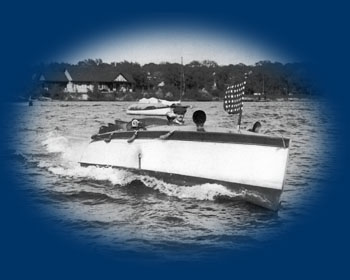
As World War Two approached Wayzata became a city with locally
provided jobs and retailers that provided all of a family's needs. The boat
building era was ending and home-building was starting to grow. During the
war, wooden 8-man boats built in Wayzata were used by American soldiers to
cross Europe's many rivers, and dairy farming became a large local activity.
At wars end these farms became many single family housing sites and two car
garages, which soon became the standard, made their appearance. More
gasoline stations opened; Wayzata had 10 to serve all these cars, and
Downtown parking was in short supply. Highway 12 was widened to four lanes,
and the population swelled with commuters who worked in Minneapolis. More gasoline stations opened; Wayzata had 10 to
serve all these cars, and the downtown parking was in short supply.
Downtown residences were replaced by more stores serving not only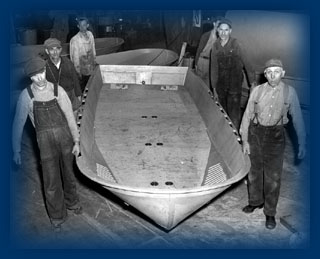 Wayzata
but the new families moving onto the former farmlands outside of Wayzata.
Longtime locals were still the only candidates for public offices and the
need for more schools was what concerned most. In summers the lake
continued to draw people for boating and fishing activities; fishing boats
were rented and bait was sold in downtown. Wayzatans changed their attitude
toward liquor; we built our first fire station, using monies obtained from
a newly opened municipal bar and liquor store. Wayzata became a charter city at the
same time people began considering it as part of the Minneapolis
metropolitan area. Wayzata
but the new families moving onto the former farmlands outside of Wayzata.
Longtime locals were still the only candidates for public offices and the
need for more schools was what concerned most. In summers the lake
continued to draw people for boating and fishing activities; fishing boats
were rented and bait was sold in downtown. Wayzatans changed their attitude
toward liquor; we built our first fire station, using monies obtained from
a newly opened municipal bar and liquor store. Wayzata became a charter city at the
same time people began considering it as part of the Minneapolis
metropolitan area.
In the 1950's Wayzata annexed enough land from Minnetonka, Plymouth and
Orono to double in size, but this also meant that the 'commuters' living in
those areas, as well as those in Wayzata, would be a majority of the
population. Newer residents became active citizens, held City Council
seats, and decisions would be made that changed the course of Wayzata
history. Shopping centers were built to hold more stores which met the
residents daily needs, while the downtown shops focused on fashion and
service businesses. The small town near a major city worked well until the
1970's when newly widened Highway 12 freeway brought Minneapolis stores
much closer, and a major shopping center opened five miles away. Wayzata's
downtown shops were replaced by condominiums, then office buildings
followed with franchise fast food shops dominating one part of town. Then our movie
theater closed. Soon much of the public beach was converted to an asphalt
parking lot to accommodate a business that had recycled a boat-builders
shop into a large office block. Wayzata was no longer the central place in
the lives of area youth and the lake itself took on a role of being more
scenery than function.
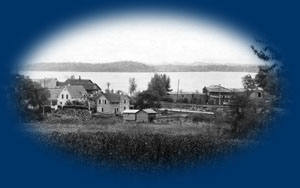
As downtown Wayzata became a highly desirable 'executive office' center
because of the lake view, some well regarded shops with unique merchandise
and upscale restaurants began appearing. Residences also began returning to
downtown as several exclusive condominium and townhouse developments
appeared on the City Council agenda. In a small manner Wayzata was
returning to its history as downtown residential use with leisure time
enjoyments. Many of the older homes in Wayzata were replaced with much
larger homes as "mansionization" spread from the lakeshore estates to the
blocks going up the hill from downtown. Longtime Wayzatans called for, and
won, a referendum to have the City buy the last remaining piece of the Big
Woods, which had provided the early settlers with lumber and ginseng, and to
preserve this forest as a city treasure. A movement then began to save some
of the historic cottage era homes still left in town. Newer Wayzatan's had
their impact as well; an opulent City hall and Library was built; perhaps
reflecting the high regard which they believed should be accorded Wayzata
Although Wayzata now has a much different ambiance from its recreational
based history, it still has the most picturesque and alluring setting of
any town in Minnesota. With one look it is easy to understand why so many
want to work and live here.
|
![]()